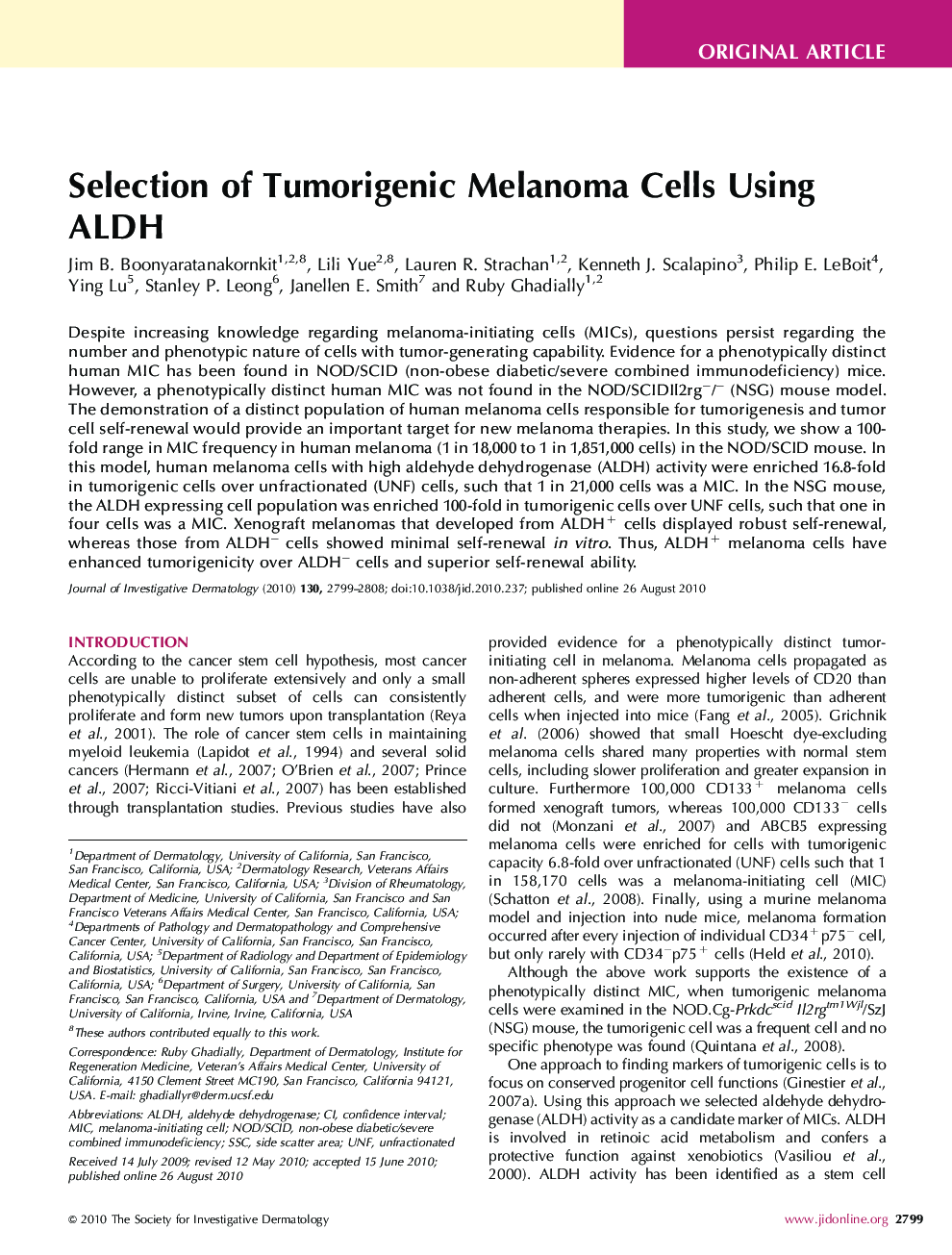| Article ID | Journal | Published Year | Pages | File Type |
|---|---|---|---|---|
| 3215817 | Journal of Investigative Dermatology | 2010 | 10 Pages |
Despite increasing knowledge regarding melanoma-initiating cells (MICs), questions persist regarding the number and phenotypic nature of cells with tumor-generating capability. Evidence for a phenotypically distinct human MIC has been found in NOD/SCID (non-obese diabetic/severe combined immunodeficiency) mice. However, a phenotypically distinct human MIC was not found in the NOD/SCIDIl2rg−/− (NSG) mouse model. The demonstration of a distinct population of human melanoma cells responsible for tumorigenesis and tumor cell self-renewal would provide an important target for new melanoma therapies. In this study, we show a 100-fold range in MIC frequency in human melanoma (1 in 18,000 to 1 in 1,851,000 cells) in the NOD/SCID mouse. In this model, human melanoma cells with high aldehyde dehydrogenase (ALDH) activity were enriched 16.8-fold in tumorigenic cells over unfractionated (UNF) cells, such that 1 in 21,000 cells was a MIC. In the NSG mouse, the ALDH expressing cell population was enriched 100-fold in tumorigenic cells over UNF cells, such that one in four cells was a MIC. Xenograft melanomas that developed from ALDH+ cells displayed robust self-renewal, whereas those from ALDH− cells showed minimal self-renewal in vitro. Thus, ALDH+ melanoma cells have enhanced tumorigenicity over ALDH− cells and superior self-renewal ability.
